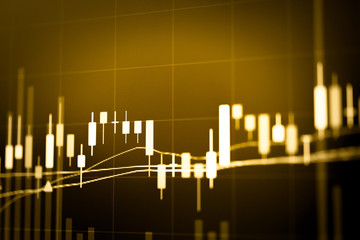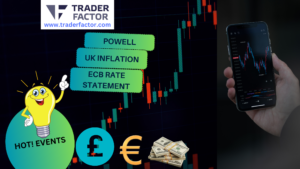US and Asian stocks fell on the last day of 2022 trading as the China Caixin manufacturing PMI decreased to 49.0 in December from 49.4 in November. Asia-Pacific markets traded mixed to start the first trading week of the year.
Wall Street expects a difficult first six months, but it is growing optimistic about ebbing inflation, a slower pace of rate hikes, and China’s openness.
US Stocks
On Friday, the final trading day of 2022, U.S. stocks saw a decline. The S&P 500 dropped by 0.3%, the Dow Jones Industrial Average lost 0.2%, and the Nasdaq Composite Index fell by 0.1%.

S&P 6M
These declines followed a trend of losses for the year, despite traders’ hopes for a strong finish, also known as the “Santa Claus rally,” in which U.S. stocks typically see an average gain of 1.3% during the last five trading days of the year and the first two of the new year.
So far, the benchmark index has increased by approximately 0.7%.
Since the 2008 financial crisis, the highest yearly percentage falls in all three indices have been caused mostly by a sell-off in growth stocks as concerns about the Fed’s rapid interest rate increases boosted the yield on US Treasury securities.
The primary macro explanations, according to investment gurus, “came from a mix of events.” the continued supply chain disruption that began in 2020, the inflationary increase, and the Fed’s slowness in starting its program to tighten interest rates in an effort to control inflation.

Asian Stocks
South Korea’s Kospi index fell 0.8% to 2208.17 at the start of the day, with energy and travel stocks particularly affected. This comes as local health authorities implemented mandatory Covid tests for travelers from China.
Foreign and institutional investors were responsible for the majority of the retreat. Meanwhile, the USD/KRW exchange rate was 0.1% higher at 1,273.60.
In Hong Kong, the Hang Seng Index opened lower as concerns about rising Covid infections in China dampened market optimism.
The index dropped 1.1% to close at 19781.41, with consumption-related companies and tech giants leading the declines.
The Hang Seng Tech Index fell 1.2%, while property stocks saw a reversal of recent gains, with the Hang Seng Mainland Properties Index declining 2.6%.

Hang Seng Index
Chinese shares also opened lower, as the sudden reopening of the country has led to a surge in Covid-19 cases and impacted the economy.
December’s PMI data, which was worse than expected and hit its lowest level since February 2020, suggests that “growth likely bottomed in Q4 and should gradually recover in H1,” according to economists.
Financial and auto-related industries weighed on the market, while chip makers and telecoms saw gains.
The Shanghai Composite Index dropped 0.1% to 3087.51, the ChiNext Price Index fell 0.3%, and the Shenzhen Composite opened flat.
Open a demo account with Exante Forex Broker and access over 400,000 instruments

Forex
During the morning session in Asia, the Japanese yen strengthened against other currencies in the G-10 and Asia.
This trend is believed to be a result of negative developments, such as losses in regional equity markets and a warning from a top Chinese public health official about the potential for Covid-19 outbreaks in rural areas and increasing risk-off sentiment.
According to market analysts, the upcoming U.S. corporate earnings season may also present a challenge for risk sentiment.
As a result, the USD/JPY exchange rate fell 0.5% to 130.15, the AUD/JPY exchange rate slipped 0.8% to 88.25, and the EUR/JPY exchange rate was down 0.6% to 138.71.
Gold
According to analysts, gold prices increased during the early session in Asia due to positive technical factors.
Technical analysis show gold prices have been steadily moving upwards within a rising wedge chart pattern.
While this pattern is typically bearish, the fact that gold prices are still within the wedge suggests that the near-term outlook for gold may be slightly positive. Currently, spot gold is up 0.4% at $1,830.70 per ounce.
Oil
Oil prices decreased due to concerns about China’s economic growth following the release of weaker-than-expected December manufacturing PMI data.
This data suggests that China’s reopening may be slower than expected, potentially diminishing some of the pre-New Year gains in the current oil rally.
Front-month WTI crude oil futures are down 0.5% at $79.83 per barrel, while front-month Brent crude oil futures have fallen 0.7% to $85.34 per barrel.
2023 Forecast
Economists are warning investors to prepare for another volatile year in the financial markets as central banks deal with inflation, China’s economy recovers from Covid-19 restrictions, and the ongoing conflict in Ukraine threatens to push the global economy into recession.
According to Wall Street predictions, the first half of 2023 is likely to be bumpy, following the significant market decline in 2022.
Despite this, the S&P 500 is still expected to finish the year slightly higher than it started. A poll by analysts showed an average target of 4,078 points for the S&P 500 at the end of 2023, which is about 6% higher than its close in 2022.
It is predicted that the US Federal Reserve will slow its interest rate hikes this year due to a deteriorating outlook for the US economy.
Inflation in the US has declined from its peak in the summer of 2022, and the series of Fed rate hikes that year has also caused a slowdown in the housing market.
Read the following in the Forex Education Section
- Beginners Guides and Tips For Forex Trading
- Read A Beginners Guide To Forex Trading
- Mistakes Most Beginner Forex Traders Make and How To Avoid Them
- A 2023 Beginners Guide To Buying And Selling Currencies
- Can You Make Money Trading Forex In 2022 and 2023: Here Are The Facts

Disclaimer:
All information has been prepared by TraderFactor or partners. The information does not contain a record of TraderFactor or partner’s prices or an offer of or solicitation for a transaction in any financial instrument. No representation or warranty is given as to the accuracy or completeness of this information. Any material provided does not have regard to the specific investment objective and financial situation of any person who may read it. Past performance is not a reliable indicator of future performance.



















